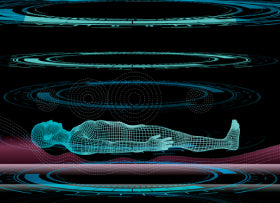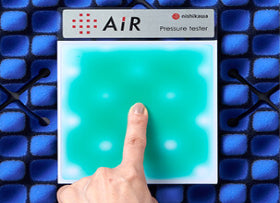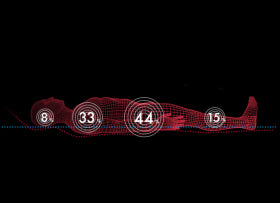Scoliosis and Sleep: Selecting the Perfect Mattress for Spinal Care
Did you know that over 7 million Americans are affected by scoliosis? Researchers and doctors continue to study the main causes of scoliosis, but its impact on quality of life is clear. The abnormal curving of the spine can create several issues, such as back pain, difficulty breathing, and discomfort—all of which lead to a lack of good-quality sleep.
With the impact of scoliosis, several solutions have emerged to alleviate the discomfort it brings. One of which is a firm mattress for back pain, which offers enhanced pressure relief and spinal alignment.
To help understand how a mattress can help people with scoliosis, it is important first to understand the impact of this condition on quality sleep.
Scoliosis and Sleep
Scoliosis can range between mild and very severe; nevertheless, it can create complications that can disrupt sleep. As scoliosis progresses, its severity increases, leading to additional pain and unevenness in the body structure. When trying to rest, people with scoliosis often find that back and muscle pain, as well as postural changes, prevent them from getting restorative sleep.
Quality sleep allows your body to rejuvenate and repair itself after a busy day. Without the right amount of rest, a person can struggle with even the most basic functions, such as focusing, remembering, working, and conversing with others.
In addition to healthy sleep habits, it is essential to rest on a mattress or mattress topper for back pain that promotes healthy spinal alignment. However, with so many models available, it can be challenging to select the right one.
Guide to Choosing the Right Mattress
To find the right mattress for scoliosis, here are the key factors to consider:
- Firmness Level
A mattress that is too soft would cause your spine to sink in, while one that is too firm would not provide the right pressure relief. The right level of firmness is between medium and medium-firm. However, for side sleepers, a softer mattress may help cushion pressure points while still promoting healthy spinal alignment.
- Pressure Points
Scoliosis can lead to increased pressure on areas such as the hips, pelvis, and shoulders, so it is important to find a mattress that provides great pressure relief. In addition to materials such as foam and latex, look for designs with zoned support, which are firmer in the middle and softer around the shoulders and hips.
- Contouring
Proper contouring is essential for spinal care. Your mattress should gently hug all the natural curves of your spine without letting it sink too deeply. Mattresses designed with supportive structures, such as multiple points, can evenly distribute pressure and offer excellent cushioning.
- Temperature Regulation
People with scoliosis may be prone to sleeping hot, which disrupts sleep and overall comfort. Look for mattresses that have cooling technologies, such as gel infusions, breathable covers, or even airflow systems. Materials also have varying temperature regulation. For instance, polyurethane offers breathability due to its airy structure, allowing you to sleep comfortably.
Find The Perfect Mattress Today
The right mattress can greatly improve the quality of sleep for people with scoliosis. By considering factors like material, firmness, pressure relief, contouring, and temperature regulation, you can find the perfect mattress to alleviate back pain and promote a restful night's sleep.
Say goodbye to sleepless nights with AiR by nishikawa, where sleep science transforms your life. Our award-winning AiR Performance Mattresses offer superior spinal support and premium comfort, helping you achieve a truly restful sleep.
Visit our website at www.air-nishikawa.com/pages/contact-us
We can help you measure the pressure balance applied to your body when sleeping and recommend the ideal mattress for your needs. We can also precisely measure the curve of your head and neck so you can have the perfect pillow for the best sleeping experience.
Read More: Beyond Thickness: Unveiling the Art of Sleep in Japanese Culture with nishikawa




